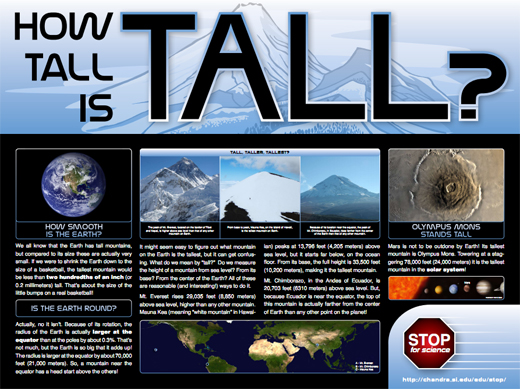STOP at the NSTA
Submitted by chandra on Tue, 2011-12-13 19:01One of the projects that we're very excited around here is something called "Stop for Science!" (aka, STOP). This is a program aimed at engaging kids outside of classroom time in thinking about science. STOP is meant to be fun, but also informative. The centerpiece of the program is a series of five posters covering different areas. The topics range from "how tall is tall" to "when stars go boom." Each poster has accompanying material including background information, questions for different ages of kids, and teacher resource guides.




